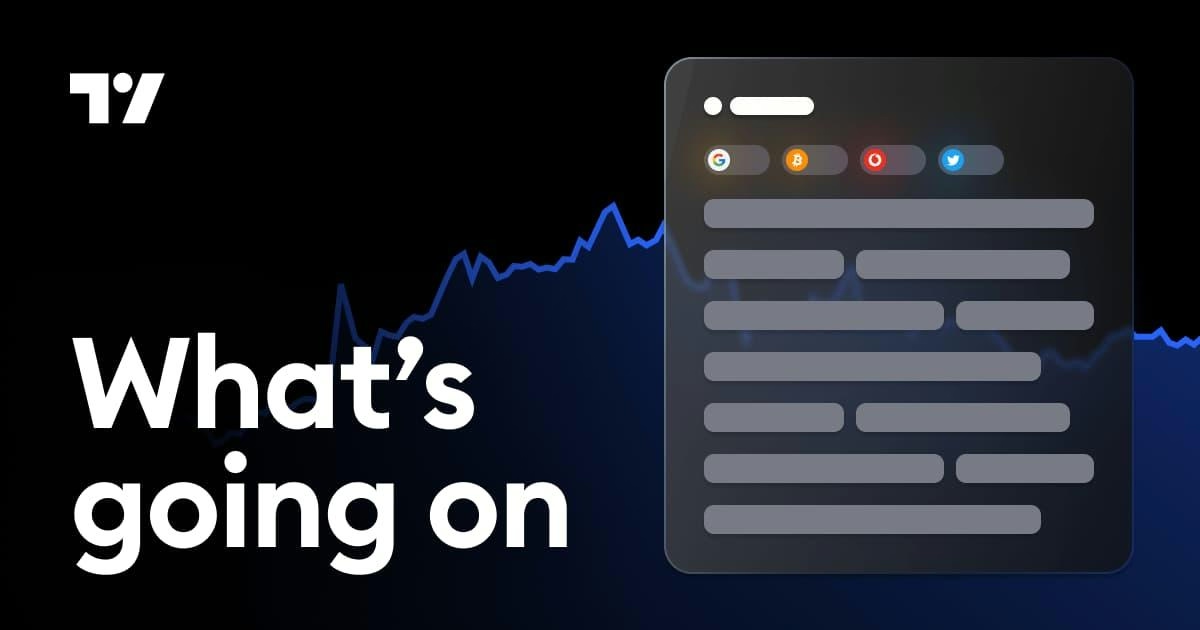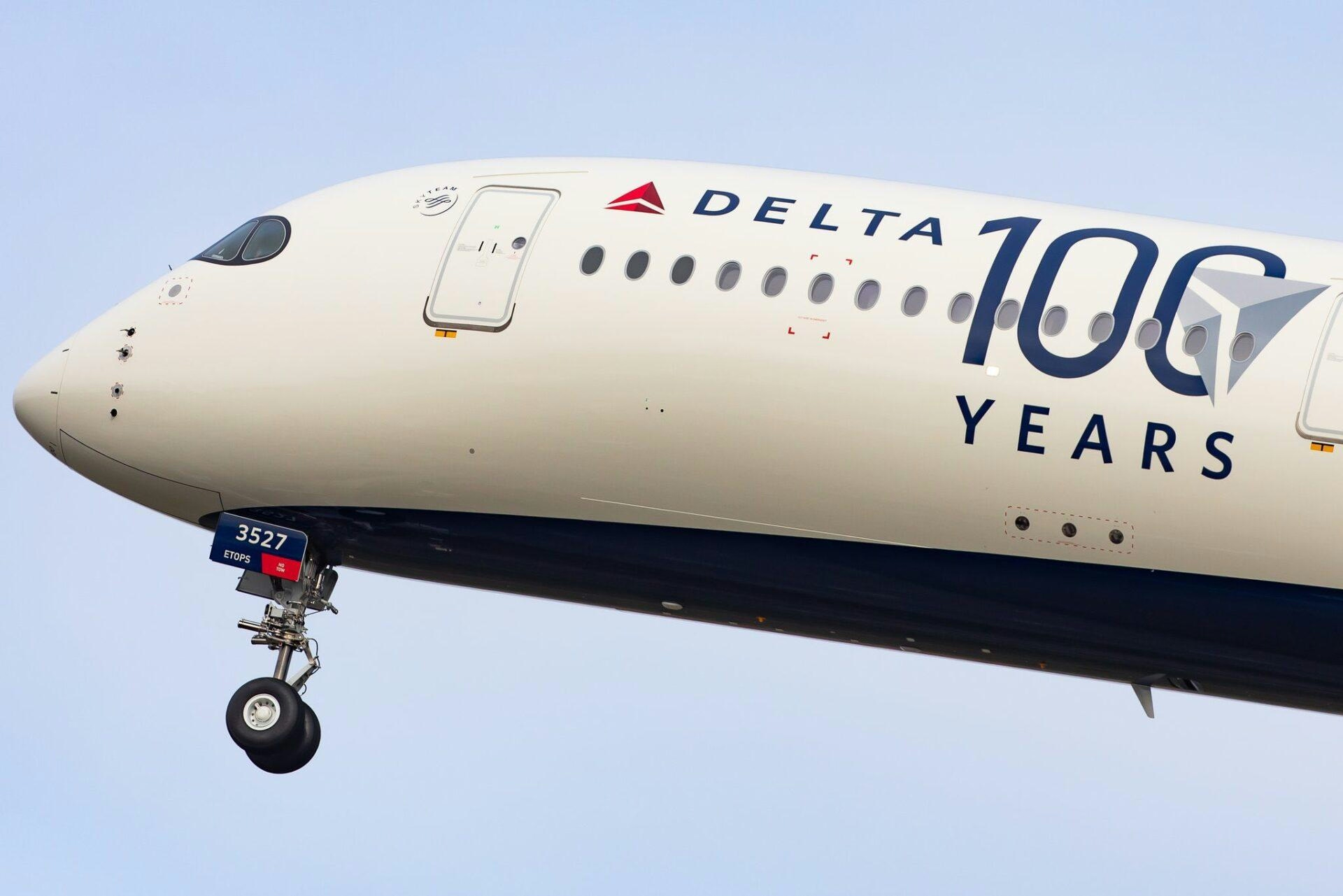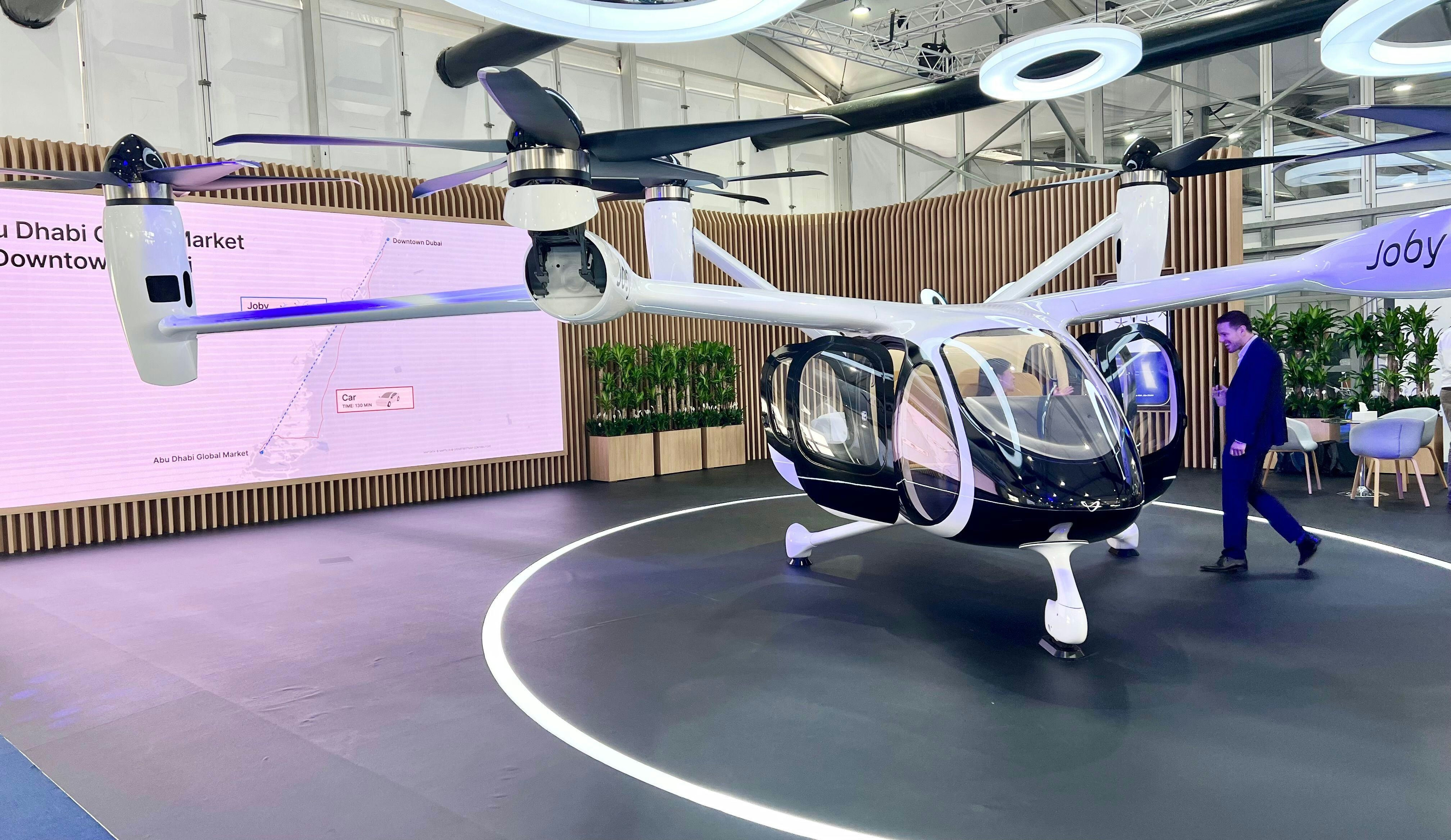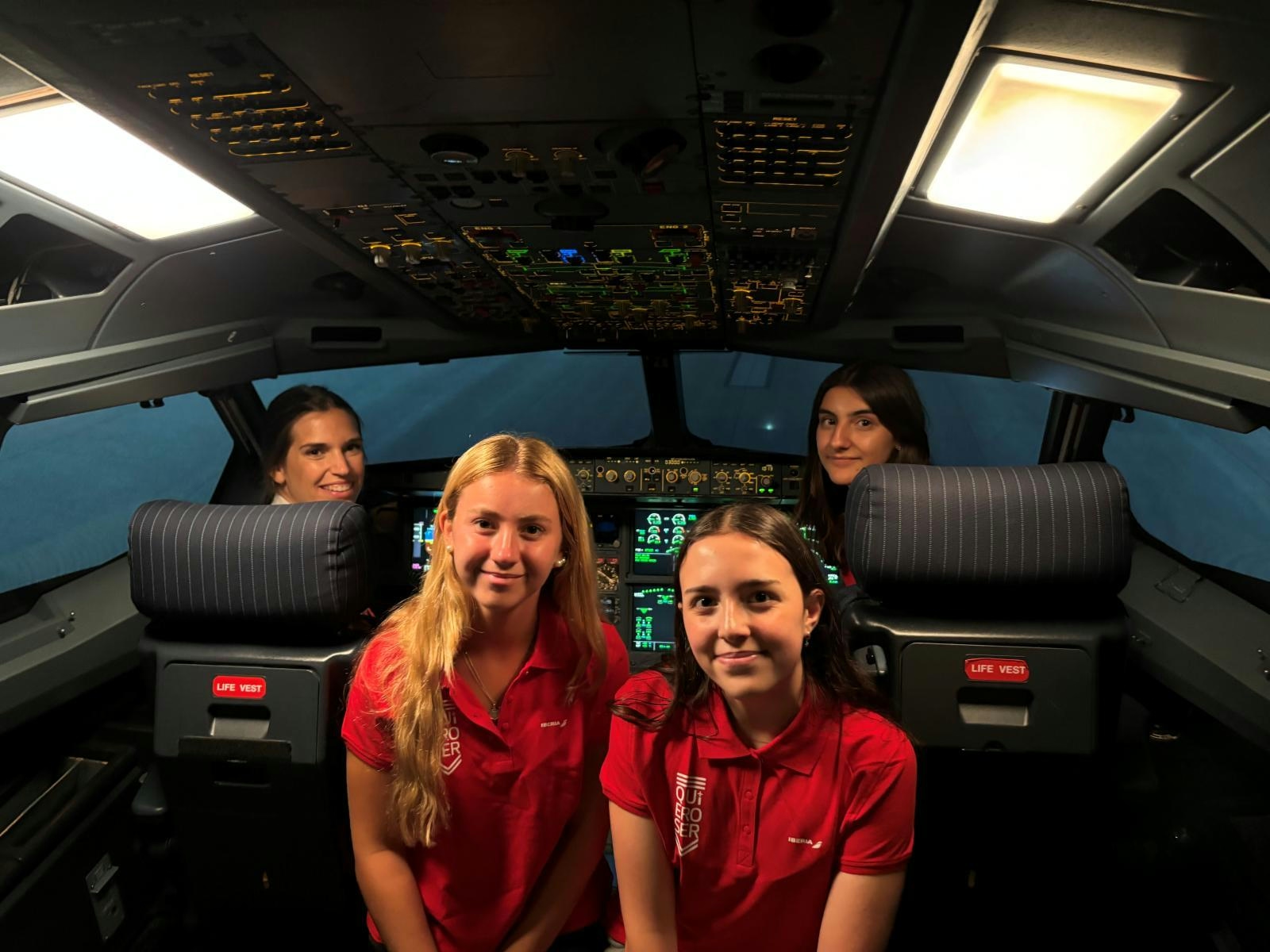
Smarter email, faster business.
Auto-tag, parse, and respond to RFQs, quotes, orders, and more — instantly.
Understanding the Impact of AI on Predictive Maintenance
May 22, 2025By ePlane AI
0
0
Predictive Maintenance
Artificial Intelligence
Machine Learning
More news

International Aviation Authority Considers Joining AI-Related Crash Investigation
International Civil Aviation Organisation to Join Air India Crash Investigation as Observer
ICAO’s Unprecedented Involvement in a High-Profile Aviation Disaster
The International Civil Aviation Organisation (ICAO) is set to participate as an observer in the investigation of the Air India Flight 171 crash, following India’s approval of the UN aviation body’s formal request. The request, submitted on June 20, cited the critical nature of the incident and the significant public interest it has generated. This development marks a rare instance of ICAO seeking direct involvement in an accident probe, underscoring the gravity of the tragedy.
The crash occurred on June 12 shortly after takeoff from Ahmedabad, resulting in at least 271 fatalities. The disaster has drawn intense international scrutiny, with 52 British nationals among the victims and Boeing, the aircraft’s manufacturer, based in the United States. Both UK and US authorities have been involved in the investigation to date, although it remains unclear whether either government formally requested ICAO’s participation.
An official familiar with the matter explained that ICAO’s offer to join the investigation reflects the incident’s critical importance and widespread public concern. India’s acceptance of this offer is expected to lead to the designation of an ICAO observer within days. This move is considered highly unusual, as ICAO’s own guidelines under Annex 13 typically restrict its involvement in accident investigations unless explicitly invited by the state with jurisdiction.
Expert Perspectives on ICAO’s Role and Investigation Challenges
JS Rawat, former joint director general of India’s Directorate General of Civil Aviation (DGCA), emphasized the exceptional nature of ICAO’s request, noting that in his more than 30 years of experience, this is the first time the organisation has sought to participate in an investigation in this manner. Correspondence reviewed from India’s ICAO representative to the civil aviation secretary highlighted that the presence of an observer would significantly enhance the efficiency and effectiveness of the ongoing probe.
Aviation safety expert Mohan Ranganathan clarified that ICAO’s role, along with that of other international stakeholders such as the UK Civil Aviation Authority, Boeing, and the US National Transportation Safety Board, will remain limited. The Aircraft Accident Investigation Bureau (AAIB) of India retains full responsibility for conducting the investigation, with external parties providing assistance only as requested. Typically, ICAO’s observer role involves advising on compliance with Annex 13 requirements rather than direct investigative authority.
The investigation faces considerable challenges, including the complex task of determining the precise causes of the crash, which may involve both technical failures and human factors. The recovery and analysis of the flight data recorder are expected to be pivotal in reconstructing the sequence of events leading to the disaster.
Broader Implications for Aviation Industry and Air India
The crash has already begun to reverberate across the aviation sector, particularly impacting the insurance market, which is anticipated to harden due to increased risk perceptions. This effect is especially pronounced in India, where the aviation industry has been grappling with financial losses. Competitors and regulators may respond with heightened scrutiny and revisions to safety protocols in the wake of the tragedy.
For Air India, the incident represents a significant challenge amid its ongoing transformation under the Vihaan.AI program, which aims to elevate the airline to a “world-class global” status. The findings of the investigation and the subsequent industry response are likely to have enduring consequences for both the airline and the wider aviation community.
Requests for comment from the civil aviation ministry and ICAO were not answered.

Thai Airways revives THB 10bn MRO project, ready to invest this year
Thai Airways Revives THB 10 Billion MRO Project, Plans Investment This Year
Thai Airways is set to revive its long-delayed maintenance, repair, and overhaul (MRO) project, valued at THB 10 billion, with intentions to commence investment within the current year. This development marks a significant step for the national carrier as it seeks to rebuild and expand following its emergence from bankruptcy proceedings. However, industry experts caution that the project faces considerable challenges in a competitive and highly regulated environment.
Strategic Ambitions and Market Challenges
The MRO facility was initially designed to establish Thailand as a key regional aviation hub, requiring substantial capital outlay and compliance with stringent regulatory standards. Thai Airways will confront intense competition from established regional players, notably Garuda Indonesia’s GMF AeroAsia, which currently holds a dominant position in the Southeast Asian MRO market. The airline’s ability to secure funding and execute the project effectively remains under scrutiny, particularly given its recent financial restructuring.
Market responses to the announcement have been mixed. While some stakeholders view the initiative as a positive indicator of Thailand’s commitment to strengthening its aviation infrastructure, others express reservations about Thai Airways’ financial stability and capacity to deliver on such an ambitious project so soon after emerging from bankruptcy. Analysts highlight that lingering concerns over investor confidence could complicate efforts to attract the necessary capital.
Competitive Dynamics and Future Outlook
Rival airlines are expected to monitor Thai Airways’ progress closely, with some likely to enhance their own maintenance capabilities or adjust route strategies to safeguard market share. The competitive landscape has already evolved with the recent launch of a joint venture between Thai Airways and Turkish Airlines on the Bangkok-Istanbul route, a strategic move that may further influence regional market dynamics and prompt additional responses from competitors.
Despite these obstacles, Thai Airways remains optimistic about the MRO project’s potential to create new revenue streams and support the airline’s long-term recovery. The company has indicated readiness to proceed with investment this year, contingent upon receiving final regulatory approvals.
As the global aviation sector continues its recovery from the pandemic, the success of Thai Airways’ MRO initiative will be closely observed as a key indicator of both the airline’s future prospects and Thailand’s broader ambitions to become a leading aviation hub in the region.

Air T Inc. SEC Form 10-K Filing
Air T, Inc. Files Annual SEC Form 10-K, Reports Revenue Growth Amid Market Challenges
Air T, Inc., a diversified holding company with operations spanning overnight air cargo, ground support equipment, commercial aircraft, engines and parts, and digital solutions, has submitted its annual Form 10-K filing with the Securities and Exchange Commission. The report provides a comprehensive overview of the company’s financial performance, operational developments, and strategic priorities, while also addressing the challenges it faces in a competitive and evolving market environment.
Financial Performance and Segment Analysis
In the fiscal year ending March 31, 2025, Air T reported total revenues of $291.9 million, marking a 2% increase compared to the previous year. This growth was primarily driven by higher labor revenues and a significant rise in software subscription sales. Operating income improved by $0.6 million to $1.9 million, largely due to increased sales of higher-margin component packages. However, the company recorded a net loss of $5.4 million, reflecting an expansion in net losses year-over-year. This was mainly attributable to elevated interest expenses and volatility in the fair value of interest rate swap contracts. The net loss attributable to stockholders stood at $6.1 million, with a loss per share of $2.23 on both a basic and diluted basis.
Air T’s operations are organized into four principal segments, each managed independently and offering distinct products and services. The Overnight Air Cargo segment, operated through Mountain Air Cargo, Inc. (MAC) and CSA Air, Inc. (CSA), maintains a longstanding partnership with FedEx, operating and maintaining a fleet of 103 aircraft under dry-lease agreements as of the end of the fiscal year. The Ground Support Equipment segment, represented by Global Ground Support, LLC (GGS), manufactures and services aircraft deicers and specialized equipment. This segment experienced a 5% revenue increase, supported by robust spare parts sales and a backlog valued at $14.3 million.
Conversely, the Commercial Aircraft, Engines and Parts segment, which includes Contrail Aviation Support, LLC and Jet Yard, LLC, saw a 6% decline in revenue. This decrease was driven by a reduced supply of whole assets available for tear-down or resale. The Digital Solutions segment, comprising WorldACD Market Data B.V. and Ambry Hills Technology, LLC, recorded a substantial 26% increase in revenue, fueled by higher sales of software subscriptions.
Operational Developments and Strategic Outlook
Operationally, GGS delivered 15 deicers to the U.S. Air Force during fiscal 2025 and has secured confirmed orders for 16 additional units in fiscal 2026. In a notable milestone, MAC operated the first commercial revenue-service flight for the Cessna 408 SkyCourier in 2023, highlighting Air T’s role in introducing new aircraft models to the market. The Overnight Air Cargo segment services routes across the eastern United States, the upper Midwest, and the Caribbean, with FedEx remaining a key customer.
Amid a challenging market environment characterized by inflationary pressures and shifting trade policies, Air T continues to prioritize operational efficiency and risk management. The company’s strategic focus remains on diversification and growth, with particular emphasis on expanding its digital solutions offerings, which are expected to be a significant driver of future performance. Potential challenges include managing financial and strategic risks, maintaining operational effectiveness, and responding to competitive pressures. Market responses will likely depend on Air T’s ability to execute its strategic initiatives effectively, while competitors may seek to enhance their own product portfolios to safeguard market share.
Despite ongoing economic headwinds, Air T anticipates sustained demand for commercial aircraft, engines, and parts. The company remains committed to leveraging its diversified business model and strategic investments to foster growth, positioning digital solutions as a central pillar of its expansion strategy.

Which Widebody Aircraft Is Delta Air Lines the Largest and Only U.S. Operator Of?
Delta Air Lines and the Airbus A330-900neo: A Unique Position in the U.S. Market
Since its unveiling in 2014 and first flight in 2017, the Airbus A330-900neo has rapidly established itself as a preferred widebody aircraft for long-haul routes across the globe. Among U.S. carriers, Delta Air Lines holds a distinctive position as the only commercial airline operating this model domestically. Moreover, Delta is the largest operator of the A330-900neo worldwide, underscoring its strategic commitment to this aircraft type.
Delta’s A330-900neo Fleet and Global Context
Delta currently operates a fleet of 36 Airbus A330-900neos, with an additional three aircraft expected to be delivered by the end of the year, bringing the total to 39. According to aviation analytics firm Cirium, these aircraft provide over 500,000 seats monthly, primarily servicing long-haul routes spanning distances between 3,000 and 6,000 miles. The A330-900neo’s maximum seating capacity of 465 makes it an attractive option for airlines aiming to optimize passenger loads and profitability on high-demand international routes.
Globally, the A330-900neo has seen 372 deliveries, significantly surpassing its smaller counterpart, the A330-800, which has recorded only 12 deliveries. Other prominent operators include Cebu Pacific with 16 aircraft, AirAsia X and Flynas each with 15, Cathay Pacific with 30, Virgin Atlantic with 13, TAP Air Portugal and Garuda Indonesia each with 12, and ITA Airways with 10.
Launch Customers, Orders, and Delta’s Strategic Commitment
TAP Air Portugal was the official launch customer for the A330-900neo, receiving its first aircraft at the end of 2018. However, Airbus records reveal that Delta placed its initial order for 25 A330-900neos as early as November 2014, subsequently increasing the order by 10 more aircraft in 2018. Presently, Delta has 35 active A330-900neos in service, with one temporarily inactive.
Delta’s leadership in operating the A330-900neo is complemented by its unique status as the largest and sole U.S. operator of another Airbus widebody, the A350. This exclusive position has presented challenges, including potential impacts from tariffs on imported aircraft and parts, which could affect future Airbus orders and deliveries. Despite these uncertainties, Delta remains steadfast in its Airbus fleet strategy.
The airline has downplayed competitive pressures, even as rivals such as IndiGo expand partnerships with Air France-KLM and Virgin Atlantic, and plan to include Delta as a partner for launching long-haul flights to Europe. While market responses to Delta’s A350 operations have been mixed, the carrier continues to express confidence in its international growth strategy.
Delta’s Role in Shaping Long-Haul Air Travel
Delta Air Lines’ significant investment in the Airbus A330-900neo and A350 reflects its dedication to deploying modern, fuel-efficient widebody aircraft for long-haul operations. As the largest global operator of the A330-900neo and the only U.S. airline flying both the A330-900neo and A350, Delta plays a pivotal role in defining the future of transcontinental and transatlantic air travel. The airline’s ongoing navigation of industry challenges and evolving competitive dynamics will remain critical to its position in the global aviation landscape.

Joby Aviation Shares Rise 11% Amid U.S. Push for Air Taxis
Joby Aviation Shares Rise 11% Amid U.S. Push for Air Taxis
Joby Aviation’s shares surged 11% amid renewed optimism surrounding the burgeoning U.S. air taxi market. This increase reflects growing momentum driven by government initiatives and strategic industry partnerships aimed at integrating electric vertical takeoff and landing (eVTOL) aircraft into urban transportation networks. The Biden administration, alongside key industry players, is actively promoting the adoption of these innovative vehicles to transform short-distance travel.
Strategic Partnerships and Investments Propel Growth
Joby’s recent gains are underpinned by significant collaborations and financial backing. Its partnership with Delta Air Lines is expected to facilitate the future rollout of air taxi services, while a $250 million investment from Toyota signals strong confidence in Joby’s technology and readiness for commercialization. These developments position Joby as a leading contender in the race to establish a viable air taxi market both within the United States and internationally.
Intensifying Competition and Market Challenges
The competitive environment is becoming increasingly fierce. Archer Aviation, a key rival, recently secured $850 million in funding, highlighting robust investor interest and intensifying the battle for market dominance. This substantial capital infusion may enable Archer to accelerate its development and deployment efforts, particularly in strategically important regions where both companies are vying for leadership.
Market sentiment toward Joby remains divided. Some analysts have downgraded the stock, citing concerns over the absence of near-term profitability and the complexities involved in scaling operations. Conversely, others emphasize Joby’s strategic advantages, including its strong U.S. partnerships and recent expansion into the Dubai market, where regulatory frameworks and infrastructure investments are advancing rapidly.
Global Market Dynamics and Regional Shifts
The global air taxi sector is also experiencing notable regional shifts. In Europe, domestic manufacturers face challenges as local startups struggle financially, potentially allowing U.S. companies like Joby and Archer to capture greater market share. This evolving landscape may compel European competitors to intensify innovation efforts or pursue new alliances to maintain their competitiveness.
As the air taxi industry continues to develop, Joby’s capacity to leverage partnerships, secure ongoing funding, and navigate regulatory complexities will be crucial. The recent surge in its share price reflects heightened investor confidence but also underscores the volatility and high stakes inherent in this emerging market. With competition intensifying and global market dynamics in flux, Joby’s forthcoming strategic decisions will be closely monitored by investors and industry observers alike.

Iberia opens hangar doors to promote aviation careers to young women
Iberia Opens Hangar Doors to Promote Aviation Careers Among Young Women
Iberia recently welcomed 35 young women to its hangar as part of its ongoing initiative to encourage greater female participation in the aviation sector. The event, held under the airline’s ‘Quiero Ser’ programme and organized in partnership with CAE and Technovation Girls, invited girls aged 14 to 18 to engage in hands-on experiences related to commercial aviation and aircraft maintenance.
Immersive Experience in Aviation
During the visit, participants toured CAE’s crew training centre, where they explored advanced flight simulators used by professional airline crews. The group also gained access to Iberia Maintenance’s core facilities, including engine and component workshops, test benches, and Hangar 6. This provided the young women with direct insight into the daily responsibilities of pilots, aircraft maintenance technicians, and engineers, offering a rare glimpse into the technical and operational aspects of the industry.
Advancing Diversity and Inclusion
Now in its fourth year, the ‘Quiero Ser’ programme forms a key part of Iberia’s broader diversity, equity, and inclusion strategy. The initiative seeks to promote equal opportunities and elevate female role models within an industry where women remain significantly underrepresented, especially in technical and operational roles. María Bello, Iberia’s director of people and diversity, highlighted the importance of early engagement, stating, “We firmly believe that inspiring vocations from an early age is key to building a more diverse future. It is deeply inspiring to see these young women drawn to professions where female representation has historically been lower. With the ‘Quiero Ser’ programme, we aim to do just that: open doors, spark vocations, and give visibility to lesser-known professions, partly due to the lack of role models.”
Challenges and Industry Context
While the programme has received positive feedback from educational institutions and aviation employers, Iberia faces ongoing challenges in maintaining sustained interest and participation among female students. The airline operates within a competitive environment where other carriers and organizations are launching similar initiatives to attract young talent and address the gender imbalance in aviation. Responses from competitors vary from collaborative efforts to more discreet attempts to recruit from the same pool of aspiring professionals, underscoring the widespread industry imperative to enhance gender diversity.
Despite these challenges, Iberia’s dedication to fostering inclusion and inspiring the next generation of women in aviation remains resolute. By providing direct exposure to aviation careers and showcasing female role models, the airline aims to contribute to closing the gender gap and securing a more diverse future for the sector.

India Investigates AI-171 Crash Using Domestic Resources
India Conducts Domestic Investigation into AI-171 Crash
In a significant advancement for India’s aviation safety capabilities, the Aircraft Accident Investigation Bureau (AAIB) is conducting the black box data analysis of Air India Flight AI-171 entirely within the country for the first time. The wide-body aircraft crashed in Ahmedabad earlier this month, presenting considerable challenges for Air India amid its ongoing Vihaan.AI transformation program and raising broader concerns about aviation safety and transparency in India.
Decoding the Black Boxes: A Domestic Milestone
The investigation is being carried out at the AAIB laboratory in New Delhi, where officials successfully accessed and downloaded data from the aircraft’s Crash Protection Module (CPM) memory module on June 25, according to the Ministry of Civil Aviation. The cockpit voice recorder and flight data recorder—commonly referred to as black boxes—were recovered from the rooftop of a building and surrounding crash debris between June 13 and 16. To maintain data integrity during extraction, investigators employed an identical black box, known as the “golden chassis.”
The technical team leading the probe comprises experts from the Indian Air Force, Hindustan Aeronautics Limited (HAL), and the US-based National Transportation Safety Board (NTSB), representing the aircraft’s country of manufacture. Specialists in aviation medicine and air traffic control are also involved, with additional support from Boeing and General Electric teams stationed in Delhi. The entire investigation is overseen by the Director General of the AAIB.
This marks the first occasion on which India has fully decoded black box data domestically, a capability enabled by recent upgrades in equipment and infrastructure under the government’s Aatmanirbhar Bharat initiative. Previously, such critical analyses were outsourced to foreign countries including Russia, the United Kingdom, the United States, and Canada, often resulting in delays and concerns regarding transparency. The current investigation adheres strictly to international protocols outlined in ICAO Annex 13 and India’s Aircraft (Investigation of Accidents and Incidents) Rules, 2017.
Implications for Aviation Safety and Air India
The domestic handling of this investigation represents a watershed moment for India’s aviation sector, promising faster and more transparent accident probes. Nevertheless, the process is expected to face scrutiny concerning its effectiveness and impartiality, particularly as the crash has intensified questions about Boeing’s safety record and the robustness of India’s aviation oversight mechanisms. The investigation is also reviewing previous incidents involving the same aircraft, including a takeoff event at Gatwick Airport five years ago, to determine any potential connections.
The crash carries significant repercussions for Air India, potentially affecting its reputation and operational momentum at a critical juncture. The immediate response from Air India and its parent company, the Tata Group, has been crucial in providing support to the victims’ families. However, the incident may reshape the broader landscape of Indian aviation and tourism, influencing inbound travel and business activities.
As the investigation continues, industry observers emphasize that India’s capacity to independently and transparently investigate major air crashes will be vital in restoring public confidence and reinforcing the country’s position in global aviation safety.

Indonesia’s MRO GMF to Receive Support from Garuda’s Financial Aid
Indonesia’s MRO GMF AeroAsia to Benefit from Garuda Indonesia’s Financial Support
Recovery and Financial Restructuring
GMF AeroAsia, Indonesia’s foremost maintenance, repair, and overhaul (MRO) provider, is positioned for renewed growth following consecutive profitable years in 2023 and 2024. This turnaround signifies a robust recovery from the pandemic period, during which GMF endured significant losses linked to the financial difficulties of its primary client, Garuda Indonesia. The national carrier’s extensive restructuring and the broader downturn in air travel led GMF to breach financial covenants in 2020, necessitating urgent loan restructuring and creditor concessions.
The financial outlook for both GMF and Garuda is now improving. Garuda Indonesia is slated to receive a $405 million shareholder loan from Danantara, Indonesia’s sovereign wealth fund, as reported by local media. This capital injection is intended to restore Garuda’s operational capabilities, support critical MRO activities, and facilitate the return of grounded aircraft to active service. The funding will also extend to Citilink, Garuda’s low-cost subsidiary, which depends heavily on GMF for its maintenance needs.
Operational Challenges and Market Dynamics
Despite these positive developments, GMF faces significant operational challenges. The expected increase in maintenance demand, driven by Garuda’s fleet reactivation, will require GMF to rapidly expand its capacity. This expansion may place considerable strain on existing resources and necessitate substantial investments in infrastructure and technology to handle the increased workload while maintaining service quality.
As of May, Garuda had 15 aircraft grounded due to shortages of spare parts and insufficient maintenance funding. According to Aviation Week Network’s Commercial Fleet & MRO Forecast 2025, Garuda’s active fleet could reach 78 aircraft this year if 11 stored planes are returned to service, rising to 84 next year with the reactivation of an additional seven aircraft. The fleet primarily consists of 40 Boeing 737-800s and 27 Airbus A330 variants. Citilink, which mainly operates A320-family aircraft, could see its active fleet increase to 55 if nine stored units are reintroduced.
The anticipated surge in MRO demand is also expected to intensify competition within Indonesia’s maintenance sector. As Garuda and Citilink scale up operations, rival MRO providers may pursue strategic partnerships, broaden their service offerings, or invest in advanced technologies to capture a share of the expanding market. This evolving competitive environment will challenge GMF to innovate and invest strategically to maintain its leading position.
In conclusion, while Garuda’s financial lifeline and the resulting increase in maintenance requirements present a significant opportunity for GMF AeroAsia, they also introduce operational and competitive pressures. The company’s capacity to adapt and invest will be critical as Indonesia’s aviation industry advances into a new phase of post-pandemic recovery.

Austrian Airlines Considers Wet-Lease Expansion Due to 787 Delivery Delays
Austrian Airlines Considers Wet-Lease Expansion Amid Boeing 787 Delivery Delays
Austrian Airlines is evaluating the possibility of expanding its wet-lease operations in response to persistent delays in the delivery of Boeing 787 aircraft, which have disrupted the carrier’s fleet renewal strategy. As a member of the Lufthansa Group, the airline is seeking interim solutions to sustain capacity and service standards, with wet-leasing—acquiring aircraft and crew from third-party operators—emerging as a primary option.
Operational and Financial Challenges of Wet-Leasing
While wet-leasing offers a short-term remedy, it introduces significant challenges. The approach generally entails higher operational costs and complex logistics, including the coordination of external crews and the maintenance of consistent service quality. These issues have raised concerns among investors and passengers alike, who worry about potential declines in service standards and the financial implications for the airline.
Competitive Pressures in the European Market
The delays come at a time of intensified competition within the European aviation sector. Rival airlines, notably Turkish Airlines, are closely observing Austrian Airlines’ response to the 787 setbacks. Turkish Airlines may seek to leverage Austrian’s difficulties by expanding its own fleet or pursuing strategic partnerships, such as its ongoing interest in Air Europa. Such developments could heighten competitive pressures and alter the regional market landscape.
Industry-Wide Responses to Aircraft Delivery Delays
The broader industry is grappling with similar challenges as aircraft delivery delays affect multiple carriers. Airlines are increasingly exploring legal options and collaborative strategies to address supply chain disruptions. Many are reviewing contractual agreements with manufacturers and considering joint actions to mitigate the impact on operations.
As Austrian Airlines charts its course through these challenges, its forthcoming decisions will be closely monitored by stakeholders across the aviation industry. The airline’s approach may have significant implications not only for its operational resilience but also for evolving trends in fleet management and competitive strategy within the sector.

NTSB Reports on Design Changes and Timeline for 737-9 Door Plug
NTSB Details Design Revisions and Implementation Timeline for Boeing 737-9 Door Plug
The National Transportation Safety Board (NTSB) has issued a comprehensive report outlining critical design changes and the projected timeline for the Boeing 737-9 door plug, following recent safety concerns. The findings highlight significant deficiencies not only in the aircraft’s door plug design but also in Boeing’s manufacturing processes and workforce training, prompting calls for extensive corrective measures.
Design and Manufacturing Challenges
The NTSB’s investigation reveals that Boeing faces considerable technical challenges in redesigning the 737-9 door plug to comply with updated safety standards. Beyond the mechanical and engineering issues inherent in the door plug itself, the report identifies systemic shortcomings in factory oversight and employee training programs. The agency stresses the necessity for Boeing to implement robust safety and quality control enhancements across its operations, emphasizing that improvements must extend beyond engineering to encompass workforce practices and procedural rigor.
Implementation Timeline and Regulatory Oversight
The timeline for completing these modifications remains under close observation by both regulators and industry stakeholders. Boeing is expected to work in close coordination with federal authorities to ensure that all design changes satisfy stringent safety requirements before the aircraft can resume full operational status. Given the extensive scope of the redesign and the need for heightened oversight, the NTSB anticipates a protracted process, underscoring the complexity of the task ahead.
Market and Industry Implications
The report has elicited swift reactions from investors and customers, who are closely monitoring Boeing’s response to the NTSB’s recommendations. The company’s safety protocols are under renewed scrutiny, with any delays or missteps likely to affect its reputation and financial standing adversely. Meanwhile, competitors within the aerospace sector are leveraging the situation to emphasize their own commitments to safety and manufacturing excellence, potentially gaining market advantage as Boeing addresses these challenges.
Regulatory and public pressure on Boeing is expected to intensify throughout the redesign process. The NTSB’s focus on systemic improvements signals that oversight will remain rigorous in the coming months. Boeing’s capacity to effectively manage these issues will be pivotal in restoring confidence among regulators, customers, and the broader market.
The NTSB’s detailed findings underscore the complexity of the challenges confronting Boeing and highlight broader implications for the air transport industry. As Boeing undertakes the necessary changes, the industry will be closely watching how the company meets elevated expectations for safety and quality assurance.
Ask AeroGenie